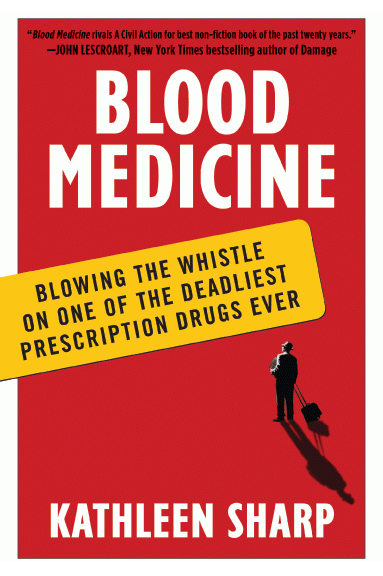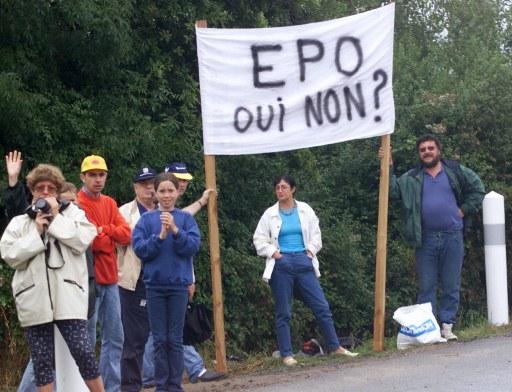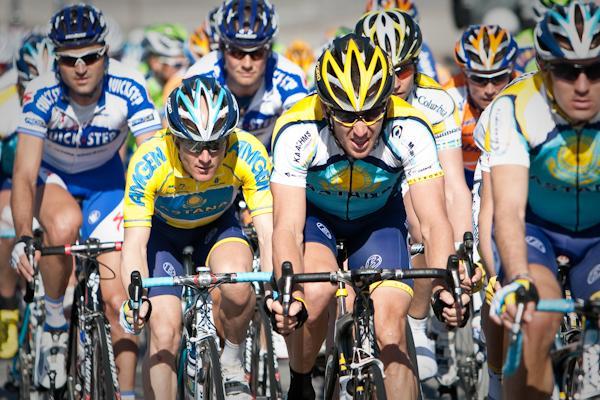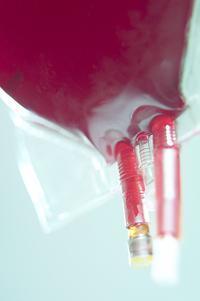Armstrong's fraud paralleled EPO-makers' feud
Amgen faces $780 million fines for illegally promoting blood booster




This fall, Kathleen Sharp's book "Blood Medicine: Blowing the Whistle on One of the Deadliest Prescription Drugs Ever" (Plume) blew the lid off of decades of activities that were questionable at best, illegal and deadly at worst, by the pharmaceutical giants behind the blood-booster EPO. Lance Armstrong and his fellow competitors may have broken sporting rules and crushed the spirit of cycling through their cheating, but the seedy side of big business puts their fraud to shame. Sharp provides this brief synopsis for Cyclingnews.
The drug erythropoietin — better known as EPO – has been splashed across headlines lately, bringing down Tour de France legend Lance Armstrong and exposing the cycling world's biggest doping scandal. But less well known is the fact that EPO's drug maker, Amgen, is fighting several lawsuits about its alleged illegal drug deals, including pushing high doses on cancer patients. Indeed, the title sponsor of the Tour of California will soon pay nearly $1 billion to settle charges that it gave "free" EPO to doctors and encouraged them to bill for the extra doses.
The company has spent more than a year trying to resolve 10 whistle-blower lawsuits with prosecutors from 15 different states. Sometime in the next few months, it's expected to pay up and, when it does, it'll put a capstone on EPO's remarkable commercial run.
In a way, Amgen lucked into selling what became the first biotech blockbuster. A researcher named Eugene Goldwasser had spent 20 years trying to isolate this protein, and his 1972 breakthrough was considered one of the great scientific contributions in the 20th century. Goldwasser wanted to work with a company to develop EPO's potential and, in the early 1980s, approached a high-tech start-up in California. As it was, financier Franklin "Pitch" Johnson, investment banker Bill Bowes and Abbott Labs' executive George Rathmann had just formed Amgen and needed a "hot" product. When Goldwasser offered to share his cache of the world's only supply of purified EPO, Amgen jumped. U.S. taxpayers may have spent decades and a king's ransom helping Goldwasser unlock the secrets of this protein. But Amgen grabbed the rights to it for a song.
The company spent years trying to clone the gene. In late 1983, Amgen raised $40 million in an initial public offering underwritten by Smith Barney, Dean Witter and Montgomery Securities, founded by amateur cyclist Thom Weisel, who also financed the U.S. Postal Service Pro Cycling Team led by Armstrong.
By the mid-1980s, Amgen filed for the key patent on producing recombinant EPO. But to monetize its product, it needed regulatory approval. So, it cut a deal with health-care giant Johnson & Johnson. If Johnson & Johnson would help secure approval from the Food and Drug Administration (FDA), Johnson & Johnson could sell EPO for all medical markets except renal failure. Amgen thought it had the better part of the deal, but Johnson & Johnson would soon demonstrate otherwise.
That set the stage for escalating cutthroat competition between the pharmaceutical giants that mirrored the growth of EPO in the parallel world of cycling.
Get The Leadout Newsletter
The latest race content, interviews, features, reviews and expert buying guides, direct to your inbox!
In Europe, EPO's clinical trials began, and marathon runners, Nordic skiers and Dutch cyclists were getting a hold of the drug on the black market. From 1987 to 1990, about 18 young cyclists died under mysterious circumstances, including 27-year-old Johannes Draaijer. He had finished 20th in the 1989 Tour de France and had competed in another race a few months later. Then, he died suddenly of a heart blockage. It wasn't clear if Draaijer had used blood-thickening EPO. But his widow told the media that she hoped her husband's death would warn other athletes about EPO's danger.
Amgen considered educating cyclists about EPO's risks. But many researchers believed that the dead athletes had simply been heavy dopers. A normal hematocrit level for a man was in the mid-40s. Yet, some cyclists had tested at extremely dangerous levels of 60 and above. Amgen insisted that EPO was "safe and effective if used properly."
But what was proper? Every drug carries risks and benefits, yet no one seemed certain what constituted a safe EPO dosage. Johnson & Johnson trials found that a 3,500 unit dose worked well. An FDA committee recommended a starting dose of 3,000 to 6,000 units. But Amgen pushed for a higher dose of 7,500 units, said Dr. Joseph Fratantoni, an FDA official who took part in the discussions. "They won the day," he added. In time, the drug's label would list a starting dose of 10,000 units and even higher—to 40,000 units a week.
Compare that with the 2-3,000 units used every few days by cyclists in the 1990s before microdosing strategies designed to defeat the EPO urine test dropped the dose to 4-500 units a day for .The sick and dying were being injected with anywhere between ten to 100 times more of the drug, often without even knowing it.
Profits push legal boundaries, safety
In 1989, Amgen's EPO brand, Epogen, was approved by the FDA. By 1991, Johnson & Johnson's brand, Procrit, followed. In 1993, Procrit was approved for the much bigger market of chemotherapy patients, and the race was on. Amgen racked up $2 billion a year in EPO, which Johnson & Johnson vowed to match. The result was that Amgen reps such as Donald Hanks found himself in a drug war with Johnson & Johnson reps such as Dean McClellan. According to the legal claims of these veteran salesmen, each company started breaking the rules, including promoting EPO on the "spread."
Amgen, for example, used elaborate spread sheets to show doctors the difference between the price they'd pay for Epogen, and the higher amount they'd pocket by filing false insurance claims. Selling on the "spread" is illegal. But Amgen told its reps to hide these illegal promotions by reporting them as "business reviews," says Hanks' suit. Amgen also began to use "other marketing techniques to boost sales, including (offering) rebates, off-invoice discounts, volume discounts, free goods, extravagant dinners, and lavish retreats for doctors." It even paid physicians who helped promote its drug $1,000 each and pharmacists $750, he said, in violation of anti-kickback laws.
Johnson & Johnson rep McClellan said he was told to do similar things. Some of his doctor-clients made $100,000 a year or more on Procrit's spread — or 25 percent of their profits. Marketing the spread was so common that between 1991 and 2003 the average EPO dose quadrupled, according to study published in Health Affairs. Yet, few professionals stopped to ask if EPO's overuse was hurting sick patients.
The drug was also becoming ubiquitous among cyclists. At the 1998 Tour de France, police found hundreds of EPO vials on members of the Festina team. Authorities raided cyclists' hotel rooms and found more vials on the TVM team's premises. It wasn't as if EPO was easy to transport. It couldn't be shaken or stirred, needed to be kept out of the sun and didn't travel well. Nor was it cheap. In the mid-1990s, a 30,000 unit injection of Procrit cost about $300; Epogen cost slightly more. But by the mid 1990s, dopers on the black market paid as much as $6,000 for 30,000 units — far more than the suggested list price.
Meanwhile, the drug makers began pushing EPO at even higher levels and for uses unapproved by the FDA. While a doctor can prescribe a drug for an unapproved, "off-label" use, it's illegal for a pharmaceutical company to do so. Yet Hanks and other sales reps claim that Amgen marketed Epogen off-label for patients with myelodysplastic syndromes ("MDS"), HIV/AIDS, cancer and for other conditions that the FDA had not approved.
Johnson & Johnson, meanwhile, began promoting higher doses of its drugs, according to whistle-blower McClellan. He was told to market doses of 40,000 units — 33 percent higher than what the FDA had approved. Worse was that the high doses could lead to aneurisms, heart attacks, and strokes. In fact, an Amgen study that it delayed releasing for years showed that higher doses resulted in more patient deaths. "In other words, Amgen (was seeking) greater profits at the expense of patient care and safety," Hanks explained in his suit.
But Johnson & Johnson's high-dose, high-profit strategy began to beat Epogen's sales. By 2000, Amgen changed a few molecules on its drug patent and unrolled a new EPO drug. In July 2002, Amgen received FDA approval to sell Aranesp in chemotherapy patients, which was Johnson & Johnson's market. At first, Aranesp sales were modest. But according to a 2006 suit filed by rep Kassie Westmoreland, Amgen solved that problem,
It began overfilling each Aranesp vial with 19-percent more drug. Hospitals paid for the standard dose. But they could keep the free "extra" drug, pool it, and collect enough to inject a "free" dose into a patient. Why would they do this? Because Amgen's doctor-clients could bill huge insurers such as U.S. Medicare and state Medicaid plans for the free drug. Westmoreland's suit claims that Aranesp's free sample worked like a kickback, paying clients to drop Procrit and buy Aranesp.
To sweeten the deal, Amgen sent doctors on paid weekend retreats and party "seminars" and taught them how to bill for the free drug. Westermoreland's 140-page suit describes an elaborate scheme that enlisted not just doctors, but drug distributor AmerisourceBergen and others. Such schemes inflate the cost of America's taxpayer-funded programs.
In 2006, just as Floyd Landis was winning his soon-to-be-stripped Tour title, EPO was selling $12 billion a year globally — and much of it off-label. The following year, studies showed that the drug was so dangerous, the FDA was forced to slap a stern, black-box warning on it. By 2010, it became clear that in many cases the expensive drug worked no better than a placebo, and in some patients, it actually grew cancer cells.
Last fall, 15 states joined Westmoreland's "overfill" whistle-blowing case, and Amgen began negotiating a $780 million settlement. "(Inducing) more and more prescriptions in higher and higher doses have become far too common courses of conduct," said a brief filed in a different Amgen suit. And it's true: drug fraud settlements have exploded in America recently: Eli Lilly paid $1.4 billion, Abbott $1.6 billion and Glaxo-SmithKline $3 billion. Put in this context, Amgen's $780 million settlement for EPO's fraud puts it at the end of the pack.
But that may change, depending on the fate of other pending lawsuits against the company.